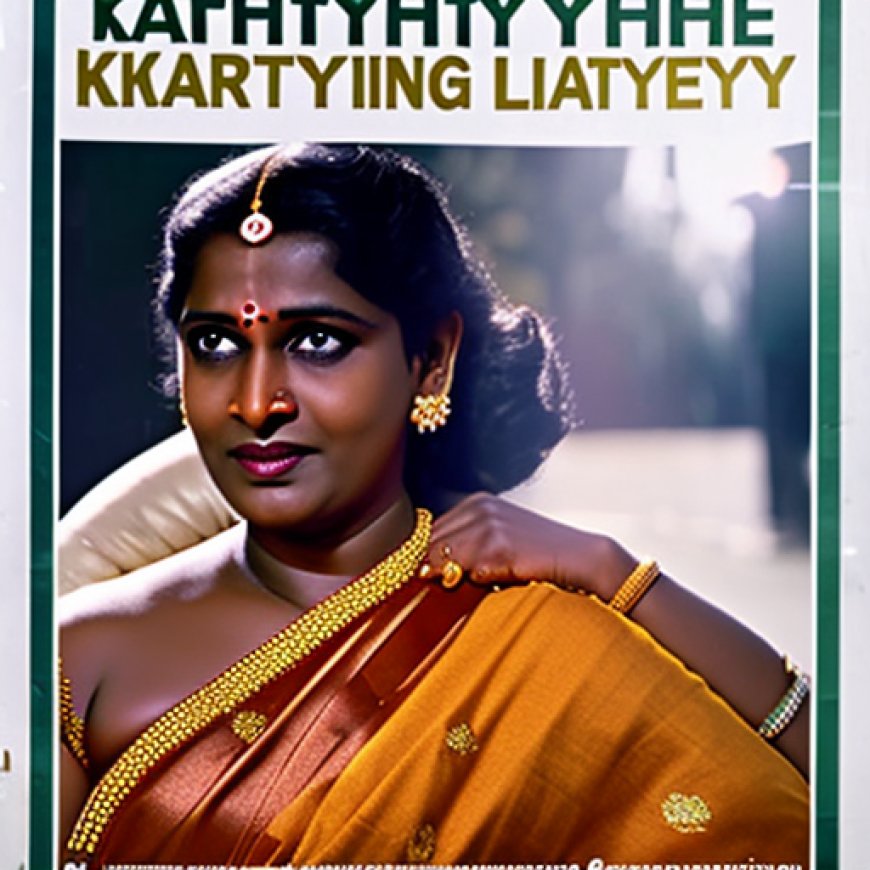Remembering Karthyayani Amma: The poster girl of Kerala’s adult literacy drive
Remembering Karthyayani Amma: The poster girl of Kerala’s adult literacy drive The Indian Express


Article Title
Subtitle

As any topper will vouch for, in the end, the question paper is always a bit of a letdown. Even the adrenaline rush that comes from knowing that one is going to ace it is no match for the crests and troughs that the process of preparation entails.
In 2018, when 96-year-old Karthyayani Amma topped Kerala’s Aksharalaksham literacy programme with 98 per cent, her one regret was that the exam had tested only a small part of her preparation. She had been hungry for more.
The poster girl of Kerala’s adult literacy programme passed away at her home on Wednesday, at the age of 101 years, but Amma’s drive — she had wanted to clear her Class X exams — remains a motivational model of both individual aspiration and institutional support. Statistics show how, despite a surge in literacy among women in India since Independence, the gender gap in education remains large.
Sustainable Development Goals (SDGs)
- Goal 4: Quality Education
- Goal 5: Gender Equality
The 2011 Census pegs the adult literacy rate for women in rural areas at 50.6 per cent as compared to 76.9 per cent in urban areas, whereas for men, the same in rural areas is pegged at 74.1 per cent as compared to 88.3 per cent in urban areas.
Over the years, one of the highest improvements in literacy rates has been among rural women, achieved in no small measure by the implementation of adult literacy programmes both at the level of the state and the Centre. Kerala, with its high overall literacy level, has been a role model in this; the New India Literacy Programme, under the National Education Policy 2020, focuses on “education for all”.
It is, however, impossible not to recognise in Karthyayani Amma’s success story the stamp of individual grit. Not having had the opportunity to attend school, literacy had come to her late. But when it did arrive, after the death of her husband and at the behest of one of her daughters, herself a school dropout, she grasped it with both hands and made it count — not just for herself but for many others in need of affirmation that the right to education comes with no constraints.
SDGs, Targets, and Indicators in the Article
| SDGs | Targets | Indicators |
|---|---|---|
| SDG 4: Quality Education | 4.6 – By 2030, ensure that all youth and a substantial proportion of adults, both men and women, achieve literacy and numeracy. | Adult literacy rates for women in rural and urban areas. |
| SDG 5: Gender Equality | 5.1 – End all forms of discrimination against all women and girls everywhere. | Gender gap in education. |
1. Which SDGs are addressed or connected to the issues highlighted in the article?
SDG 4: Quality Education
The article discusses the importance of adult literacy programs and the gender gap in education. These issues are directly connected to SDG 4, which aims to ensure inclusive and equitable quality education for all.
SDG 5: Gender Equality
The article highlights the gender gap in education, specifically in terms of adult literacy rates for women. This issue is directly connected to SDG 5, which aims to achieve gender equality and empower all women and girls.
2. What specific targets under those SDGs can be identified based on the article’s content?
Target 4.6: By 2030, ensure that all youth and a substantial proportion of adults, both men and women, achieve literacy and numeracy.
The article emphasizes the importance of adult literacy programs in improving literacy rates, particularly among rural women. This aligns with Target 4.6, which aims to ensure that a substantial proportion of adults achieve literacy and numeracy by 2030.
Target 5.1: End all forms of discrimination against all women and girls everywhere.
The article highlights the gender gap in education, indicating that discrimination against women still exists. This aligns with Target 5.1, which aims to end all forms of discrimination against women and girls.
3. Are there any indicators mentioned or implied in the article that can be used to measure progress towards the identified targets?
The article mentions two indicators that can be used to measure progress towards the identified targets:
- Adult literacy rates for women in rural areas compared to urban areas: This indicator can be used to measure progress towards Target 4.6, as it reflects the literacy levels among adult women in different settings.
- Gender gap in education: This indicator can be used to measure progress towards Target 5.1, as it reflects the extent of discrimination against women in terms of access to education.
4. SDGs, Targets, and Indicators
| SDGs | Targets | Indicators |
|---|---|---|
| SDG 4: Quality Education | 4.6 – By 2030, ensure that all youth and a substantial proportion of adults, both men and women, achieve literacy and numeracy. | Adult literacy rates for women in rural and urban areas. |
| SDG 5: Gender Equality | 5.1 – End all forms of discrimination against all women and girls everywhere. | Gender gap in education. |
Behold! This splendid article springs forth from the wellspring of knowledge, shaped by a wondrous proprietary AI technology that delved into a vast ocean of data, illuminating the path towards the Sustainable Development Goals. Remember that all rights are reserved by SDG Investors LLC, empowering us to champion progress together.
Source: indianexpress.com

Join us, as fellow seekers of change, on a transformative journey at https://sdgtalks.ai/welcome, where you can become a member and actively contribute to shaping a brighter future.







